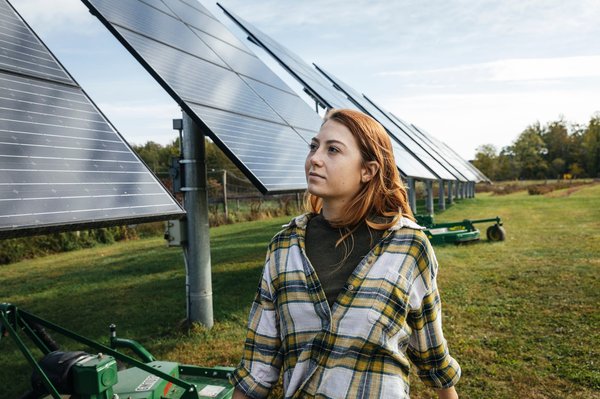
In 2014, Colorado and Washington became the first states to allow the sale of cannabis products. Since then, most states have legalized medical marijuana, and nearly half have legalized recreational marijuana as well.
Legalization of recreational marijuana is a boon for state budgets. California now regularly rakes in more than $1 billion per year in marijuana tax revenue. Many other states with thriving markets make hundreds of millions per year. States reported a combined $15.16 billion in tax revenue from recreational cannabis sales in 2022, not including revenue from medical marijuana, according to the Marijuana Policy Project.
Here are the statistics on how much revenue states get from marijuana taxes, how they tax cannabis, and what they use the money for.
Revenue
Marijuana tax revenue
Marijuana tax revenue by state
The table below shows the revenue collected in states with operational marijuana markets in 2022. Total tax collected varies depending on state population, how long the program has been established, and the method of taxation.
| STATE | 2022 MARIJUANA TAX REVENUE |
|---|---|
| Alaska | $28,690,918 |
| Arizona | $255,997,918 |
| California | $1,115,154,22 |
| Colorado | $325,103,684 |
| Illinois | $466,816,883 |
| Maine | $30,669,134 |
| Massachusetts | $248,987,059 |
| Michigan | $341,410,107 |
| Montana | $45,734,127 |
| Nevada | $152,334,798 |
| New Jersey | $20,139,655 |
| Oregon | $170,572,100 |
| Washington | $511,123,712 |
For some states, there's a lengthy delay between legalizing marijuana and getting the market up and running. In 2021, the Tax Foundation estimated excise tax revenue for states with a market that has been operational for at least three years.
Here's how much excise tax revenue states that have legalized marijuana but don't have an operational market may stand to make:
| State | Estimated annual marijuana excise tax revenue from fully operational market |
|---|---|
| District of Columbia | $26,605,996 |
| Virginia | $139,977,848 |
It's worth reiterating that these are only estimates for a fully operational market. Smaller numbers are more likely during the early years.
How much revenue are other states leaving on the table?
Using average excise tax figures and the number of marijuana-using residents in each state, the Tax Foundation estimated the potential excise tax revenue with a market established for at least three years.
Here's what they found:
| STATE | POTENTIAL MARIJUANA TAX REVENUE |
|---|---|
| Alabama | $92,217,856 |
| Arkansas | $59,314,764 |
| Florida | $448,740,070 |
| Georgia | $198,400,771 |
| Hawaii | $28,453,985 |
| Idaho | $33,295,445 |
| Indiana | $157,009,061 |
| Iowa | $50,183,462 |
| Kansas | $42,058,743 |
| Kentucky | $83,008,154 |
| Louisiana | $81,616,779 |
| Mississippi | $47,304,242 |
| Nebraska | $35,975,930 |
| New Hampshire | $44,163,575 |
| North Carolina | $182,947,622 |
| North Dakota | $13,231,599 |
| Ohio | $220,827,478 |
| Oklahoma | $67,680,000 |
| Pennsylvania | $244,553,615 |
| South Carolina | $96,680,914 |
| South Dakota | $14,270,281 |
| Tennessee | $132,509,552 |
| Texas | $397,424,206 |
| Utah | $44,428,908 |
| West Virginia | $38,327,540 |
| Wisconsin | $117,791,078 |
| Wyoming | $10,054,045 |
Medical marijuana tax collection
Medical marijuana tax collection
Not all states break down their revenue reports by medical versus recreational marijuana, but the table below shows the sources of tax revenue by type of cannabis use when data is available.
| State | Revenue from Medical Marijuana (2022) | Revenue from Adult Use Recreational Marijuana (2022) |
|---|---|---|
| Arizona | $60,474,985 | $62,694,451 |
| Maine | $3,319,473 | $27,349,661 |
Total tax collections by state
Total tax collections by state
Colorado and Washington were leaders in the recreational marijuana movement, acting as early as 2012 to move toward legalization. As a result, they've generated more revenue from marijuana taxes than most other states, some of which have had an operational market for two years or less.
Still, the table below show the tremendous potential for states to generate significant revenue over time. With states facing budget shortfalls resulting from COVID-19, revenue from recreational marijuana could be a much-needed boost. Total revenue is based on the most recent data available, which varies by state (some have released marijuana revenue tax data for 2023, while others only have reports available up to the end of 2022).
| STATE | FIRST YEAR OF TAX COLLECTION | TOTAL REVENUE COLLECTED |
|---|---|---|
| Alaska | 2017 | $114,591,860 |
| Arizona | 2021 | $615,563,928 |
| California | 2018 | $5,180,851,624 |
| Colorado | 2014 | $2,554,160,551 |
| Illinois | 2020 | $836,674,916 |
| Maine | 2018 | $59,793,030 |
| Massachusetts | 2019 | $784,518,099 |
| Michigan | 2020 | $633,767,627 |
| Montana | 2022 | $81,432,777 |
| Nevada | 2017 | $717,303,644 |
| New Jersey | 2022 | $38,992,711 |
| Oregon | 2016 | $899,333,725 |
| Rhode Island | 2022 | $3,363,768 |
| Washington | 2015 | $2,853,925,159 |
State-by-state revenue breakdown
State-by-state revenue breakdown
Now let's take a look at how cannabis tax revenue has grown over the years for each state, as well as how those states are using the money.
Alaska's marijuana tax revenue
Alaska approved the legalization of marijuana in 2014 under Ballot Measure 2. Retail sales began in October of 2016. The Marijuana Control Board was tasked with both licensing and tracking cannabis operations statewide.
| Year | Alaska state marijuana tax revenue |
|---|---|
| 2017 | $1,749,497 |
| 2018 | $10,801,357 |
| 2019 | $19,082,542 |
| 2020 | $24,213,296 |
| 2021 | $30,054,250 |
| 2022 | $28,690,918 |
How does Alaska tax marijuana?
Alaska taxes cultivators per ounce and type: $50 per ounce for mature flowers, $25 per ounce for immature flowers, $15 per ounce for trim, and $1 for each clone.
How does Alaska spend marijuana tax revenue?
- 25% to the general fund.
- 50% to the Department of Public Safety, Health and Social Services, and Department of Corrections.
- 25% to the Marijuana Education Fund.
Arizona's marijuana tax revenue
Arizona voters approved Proposition 207, the Marijuana Legalization Initiative, in 2020. This ballot initiative legalized recreational marijuana under the purview of the Arizona Department of Health and Human Services. DHS began to license retail establishments on January 16, 2021.
In its first year of operations, Arizona collected more than $217 million in tax revenue from both adult use sales, medical use sales, and excise taxes.
| Fiscal Year | Arizona state marijuana tax revenue |
|---|---|
| 2021 | $74,386,952 |
| 2022 | $255,997,918 |
| 2023 | $283,179,058 |
How does Arizona tax marijuana?
Arizona imposes two taxes on marijuana:
- A 16% excise tax
- A transaction privilege tax
How does Arizona spend marijuana tax revenue?
Excise tax revenues are dedicated to:
- Community colleges
- Municipal police
- Fire districts
- The Highway User Fund
- The Justice Reinvestment Fund
- The Attorney General
California's marijuana tax revenue
California legalized marijuana in 2016 under Proposition 64, a ballot initiative. The first retail sales in the state began in January 2018. The Department of Cannabis Control was given the responsibility for taxation and licensing.
| Year | California state marijuana tax revenue |
|---|---|
| 2018 | $401,591,935 |
| 2019 | $646,722,965 |
| 2020 | $1,135,818,964 |
| 2021 | $1,361,942,703 |
| 2022 | $1,115,154,227 |
| 2023 (Q1 and Q2) | $519,620,830 |
How does California tax marijuana?
California imposes a 15% excise tax on cannabis retailers. It used to impose cultivation taxes, but it ended those in July 2022.
How does California spend marijuana tax revenue?
- First, the revenue covers regulatory and research costs.
- Then, 60% goes to anti-drug programs targeting kids;
- 20% goes to environmental programs; and
- 20% goes to public safety.
Colorado's marijuana tax revenue
| Year | Colorado state marijuana tax revenue |
|---|---|
| 2014 | $67,594,323 |
| 2015 | $130,411,173 |
| 2016 | $193,604,810 |
| 2017 | $247,368,473 |
| 2018 | $266,529,637 |
| 2019 | $302,458,426 |
| 2020 | $387,480,110 |
| 2021 | $423,486,053 |
| 2022 | $325,103,684 |
| 2023 (January-September) | $210,123,862 |
How does Colorado tax marijuana?
Colorado has a 15% wholesale excise tax on marijuana as well as a 15% retail excise tax. Recreational marijuana is exempted from general sales tax.
How does Colorado spend marijuana tax revenue?
- 10% goes to local governments.
- 90% goes to the state government.
- 15.56% of the state revenue goes to the general fund.
- 12.59% goes to the state public school fund.
- 71.85% goes to the marijuana tax cash fund.
The cannabis tax revenue from the wholesale tax goes to the Building Excellent Schools Today (BEST) fund. The first $40 million is earmarked for constructing new schools.
Connecticut's marijuana tax revenue
On June 22, 2021, Governor Ned Lamont signed SB 1201 into law legalizing cannabis for recreational use. Retail sales began on Jan. 10, 2023. The state projected about $26 million in marijuana tax revenue in 2023, but based on sales figures so far, it will likely come up well short of that mark.
How does Connecticut tax marijuana?
Connecticut imposes the following taxes on recreational marijuana:
- Excise tax of 0.625 cents per milligram of THC for cannabis flower.
- Excise tax of 2.75 cents per milligram for edibles.
- Excise tax of 0.9 cents per milligram for other products.
- 6.35% retail sales tax.
- 3% municipal sales tax.
How does Connecticut spend marijuana tax revenue?
During the first two fiscal years, revenue generated from cannabis sales will be used to support administrative costs. In subsequent years:
- 15% will go to the general fund.
- 60% of the remaining revenue will go toward social equity programs.
- 25% of the remaining revenue will go toward substance misuse treatment programs.
Delaware's marijuana tax revenue
In March 2023, the Delaware General Assembly approved House Bill 1 to legalize marijuana and House Bill 2 to regulate and tax sales. Governor John Carney, who had previously vetoed a bill legalizing marijuana in 2022, neither signed nor vetoed the bills. Retail sales began on April 23, 2023.
How does Delaware tax marijuana?
Delaware charges a 15% sales tax on recreational marijuana sales.
How does Delaware spend marijuana tax revenue?
All marijuana tax revenue goes to the Marijuana Regulation Fund. From there, 7% is credited to the Justice Reinvestment Fund to be used for projects to improve the quality of life for communities most impacted by the prohibition of marijuana. After covering administrative costs, the legislature decides how to distribute the remainder of the funds.
District of Columbia's marijuana tax revenue
Washington, D.C., legalized recreational marijuana in 2015. However, Congress has prevented the development of a regulatory system for the sale of marijuana. It is legal to gift up to one ounce of marijuana to another individual, which has resulted in a gifting economy. Stores provide marijuana as a gift with the purchase of another item, such as a t-shirt.
Illinois's marijuana tax revenue
Recreational cannabis use was approved in Illinois in May 2019 when the Cannabis Regulation and Tax Act passed under House Bill 1438. Governor J.B. Pritzker signed the legislation into law in June of the same year, and retail sales began Jan. 1, 2020.
| Year | Illinois state marijuana tax revenue |
|---|---|
| 2020 | $52,783,471 |
| 2021 | $317,074,562 |
| 2022 | $466,816,883 |
How does Illinois tax marijuana?
Illinois charges 7% of cannabis products' value in wholesale taxes. It also levies the following retail taxes:
- 10% of value for cannabis products with 35% THC or less,
- 25% of value for cannabis products with more than 35% THC, and
- 20% of value for infused cannabis products that can't be smoked.
General sales tax also applies.
How does Illinois spend marijuana tax revenue?
- 35% to the general fund.
- 25% to the Illinois Recover, Reinvest and Renew Program.
- 20% to mental health and substance abuse.
- 10% to pay state bills.
- 8% to local government.
- 2% to public education.
Maine's marijuana tax revenue
Maine legalized marijuana in 2016 under a ballot initiative, Ballot Question 1. In response, the Legislature passed LD 1719, an Act to Implement a Regulatory Structure for Adult Use Marijuana. The Legislature overrode the governor's veto of the bill and retail sales began on October 9, 2020.
The Office of Cannabis Policy submits annual reports with Maine's marijuana tax revenue. However, its reports on recreational marijuana taxes are based on the calendar year, while its reports on medical marijuana taxes are based on the fiscal year, which runs from July 1 through June 30.
| YEAR | MAINE ADULT-USE MARIJUANA TAX REVENUE (CALENDAR YEAR) | MAINE MEDICAL MARIJUANA TAX REVENUE (FISCAL YEAR) |
|---|---|---|
| 2018 | N/A | $2,444,918 |
| 2019 | N/A | $2,597,338 |
| 2020 | $1,156,878 | $3,969,914 |
| 2021 | $12,362,620 | $6,592,228 |
| 2022 | $27,349,661 | $3,319,473 |
How does Maine tax marijuana?
Here's how Maine taxes marijuana cultivators:
- $335 per pound of flower.
- $94 per pound of trim.
- $1.50 per seedling or immature plant.
- $0.30 per seed.
- $35 per mature marijuana plant.
Consumers also pay a 10% sales tax.
How does Maine spend marijuana tax revenue?
- 12% to Adult Use Marijuana Public Health and Safety Fund.
- 88% to the general fund.
Maryland's marijuana tax revenue
In May 2023, Governor Wes Moore signed House Bill 556 and Senate Bill 516 legalizing recreational cannabis use. Retail sales began on July 1, 2023.
How does Maryland tax marijuana?
Sale of adult-use cannabis in Maryland is subject to a sales and use tax rate of 9%.
How does Maryland spend marijuana tax revenue?
Marijuana tax revenue is used to cover the full operations and administrative costs of the Maryland Cannabis Administration. All remaining tax revenue is distributed as follows:
- 35% to the Community Reinvestment and Repair Fund.
- 5% to counties.
- 5% to the Cannabis Public Health Fund.
- 5% to the Cannabis Business Assistance Fund.
- Any remaining balance to the state general fund.
Massachusetts's marijuana tax revenue
Recreational marijuana use was approved in 2016 under Ballot Question 4. While retail sales were originally set to begin in January of 2018, this was delayed until July 1, 2018 under Legislation H 3818. The state's first retail store opened in November of 2018.
| Fiscal Year | Massachusetts state marijuana tax revenue |
|---|---|
| 2019 | $22,058,544 |
| 2020 | $81,734,083 |
| 2021 | $176,731,045 |
| 2022 | $248,987,059 |
| 2023 | $255,007,368 |
How does Massachusetts tax marijuana?
In Massachusetts, retail cannabis customers pay a retail excise tax of 10.75%, plus a general sales tax of 6.25%. A city or town may also levy taxes of up to 3% of marijuana sales in its locality.
How does Massachusetts spend marijuana tax revenue?
Sales tax revenue goes to the general fund, the Massachusetts Bay Transportation Authority, and the School Building Authority.
The excise tax support programs like the Alcoholic Beverages Control Commission and the Cannabis Control Commission.
Michigan's marijuana tax revenue
Michigan legalized recreational marijuana in 2018, and its first dispensaries opened in December 2019.
| YEAR | MICHIGAN STATE MARIJUANA TAX REVENUE |
|---|---|
| 2020 | $45,700,000 |
| 2021 | $246,657,520 |
| 2022 | $341,410,107 |
How does Michigan tax marijuana?
Consumers currently pay a 10% excise tax and 6% sales tax. The excise tax applies only to recreational marijuana and not medical marijuana.
How does Michigan spend marijuana tax revenue?
Michigan's Marihuana Regulation Fund distributes tax revenues as follows:
- 15% to municipalities.
- 15% to counties.
- 35% to the Statewide School Aid Fund.
- 35% to the Michigan Transportation Fund.
Minnesota's marijuana tax revenue
In May 2023, Governor Tim Walz signed HF 100 into law legalizing recreational marijuana. Retail sales are expected to start in early 2025.
How will Minnesota tax marijuana?
Cannabis tax in Minnesota will be 10% of gross receipts from retail sales of cannabis products.
How will Minnesota spend marijuana tax revenue?
Marijuana tax revenue will be split 80/20 between state and local government. Funds are expected to be used for prevention, outreach, education, and data collection.
Missouri's marijuana tax revenue
In November 2022, Missouri voters approved Amendment 3, and recreational marijuana became legal the following month. Retail sales began on Feb. 3, 2023.
How does Missouri tax marijuana?
Missouri applies a 6% sales tax on recreational marijuana sales. It applies a 4% sales tax on marijuana sold for medical use.
How does Missouri spend marijuana tax revenue?
Marijuana tax revenue is first used to cover operational costs and then to expenses incurred by the court system for expunging marijuana expenses from people's criminal records. Remaining revenues are split three ways:
- Public defenders.
- Drug addiction treatment.
- Veterans.
Montana's marijuana tax revenue
Marijuana was legalized in a 2020 ballot initiative, Montana I-190. Under the Marijuana Legalization and Tax Initiative, retail sales began in 2022.
| YEAR | MONTANA STATE MARIJUANA TAX REVENUE |
|---|---|
| 2022 | $45,734,127 |
| 2023 (January-August) | $35,698,650 |
How does Montana tax marijuana?
Montana has separate tax structures for recreational and medical marijuana. The following taxes apply:
- 20% adult use recreational sales tax
- 4% medical use sales tax
How does Montana spend marijuana tax revenue?
Montana's marijuana tax revenue is distributed as follows:
- $6,000,000 to the HEART program
- 20% of remaining revenue to Fish, Wildlife and Parks
- 3% or $200,000, whichever is less, to veterans and surviving spouses
- $150,000 to crisis treatment and training
- Remainder to general fund
Nevada's marijuana tax revenue
Recreational marijuana sales were approved in 2016 under Ballot Question 2. The ballot initiative indicated retail sales were to start in January of 2017, the Department of Taxation pushed the start date back to July 1, 2017.
| Fiscal Year | Nevada state marijuana tax revenue |
|---|---|
| 2018 | $69,759,783 |
| 2019 | $99,184,973 |
| 2020 | $105,180,947 |
| 2021 | $157,751,596 |
| 2022 | $152,334,798 |
| 2023 | $133,091,547 |
How does Nevada tax marijuana?
Nevada taxes weed at the retail (10% of purchase) and wholesale (15% of fair market value) levels. There is also a 6.85% sales tax as well as local taxes charged in some municipalities.
How does Nevada spend marijuana tax revenue?
Income from the retail tax goes to the state's rainy day fund. Revenue from the wholesale tax goes to cover expenses and boost the rainy fund as well.
New Jersey's marijuana tax revenue
In February 2021, Governor Phil Murphy signed the New Jersey Cannabis Regulatory, Enforcement Assistance, and Marketplace Modernization Act into law. Recreational marijuana sales began on April 21, 2022.
| YEAR | NEW JERSEY STATE MARIJUANA TAX REVENUE |
|---|---|
| 2022 | $20,139,655 |
| 2023 (Q1 and Q2) | $18,853,056 |
How does New Jersey tax marijuana?
New Jersey imposes a 6.625% sales tax on recreational marijuana. Medical marijuana sales are tax-free as of July 1, 2022.
How does New Jersey spend marijuana tax revenue?
At least 70% of all marijuana tax revenues are used for investing in impact zones, which are defined as cities with high crime indexes or high unemployment rates. The remainder is used to:
- Oversee development, regulation, and enforcement of activities associated with the personal use of cannabis.
- Reimburse the cost of training police officers to detect and apprehend drug-impaired drivers.
- Further investments in impact zones, including direct financial assistance for people living in them.
- Any remaining money is deposited in the state general fund.
New Mexico's marijuana tax revenue
In March of 2021, the New Mexico legislature passed the Cannabis Regulation Act to allow commercial production and sales to residents 21 and over. Commercial sales began on April 1, 2022.
New Mexico hasn't released a full marijuana tax revenue report yet, but after a year, the state had brought in more than $27 million in marijuana taxes
How does New Mexico tax marijuana?
New Mexico imposes several taxes on recreational cannabis, including the following:
- A 12% excise tax until July 1, 2025, which will then gradually increase to 18% by 2030.
- A gross receipts tax, which varies by county.
The tax on medical marijuana was dropped because of the imposition of the tax on legalized recreational marijuana.
How does New Mexico spend marijuana tax revenue?
New Mexico distributes marijuana tax revenue to the state general fund and to local communities.
New York's marijuana tax revenue
Recreational marijuana sales were legalized in New York by S. 854, which was signed into law by Governor Andrew Cuomo in March 2021. Retail sales started on Dec. 29, 2022. While early projections were that it would generate $56 million in marijuana tax revenue in 2023, experts believe it's unlikely to reach that amount.
How does New York tax marijuana?
New York will impose the following taxes on marijuana sales:
- 0.5 cent/milligram of THC in flower.
- 0.8 cent/milligram of THC in concentrate.
- 3 cents/milligram of THC in edibles.
- 9% retail tax.
- 4% state local tax.
How does New York spend marijuana tax revenue?
After covering up-front costs, here's how New York distributes marijuana tax revenue:
- 40% to the State Lottery fund for education purposes.
- 40% to the Community Grants Reinvestment Fund.
- 20% to the Drug Treatment and Public Education Fund.
Oregon's marijuana tax revenue
Oregon legalized recreational marijuana in 2014 when voters approved Initiative Measure 91. In 2015, the legislature approved a bill allowing retail sales to start October 1, 2015. Sales were initially managed through medical dispensaries and the state began granting recreational licenses in October of 2016.
| Fiscal Year | Oregon state marijuana tax revenue |
|---|---|
| 2016 | $20,652,983 |
| 2017 | $70,263,897 |
| 2018 | $82,203,729 |
| 2019 | $102,094,948 |
| 2020 | $133,150,349 |
| 2021 | $178,262,488 |
| 2022 | $170,572,100 |
| 2023 | $142,133,231 |
How does Oregon tax marijuana?
Oregon retailers charge a 17% state retail tax on marijuana products. In some cases, retailers must also charge an additional 3% for Oregon localities.
How does Oregon spend marijuana tax revenue?
- 40% to the state school fund.
- 20% to mental health, alcoholism, and drug services.
- 15% to the Oregon State Police.
- 5% to the Oregon Health Authority for drug treatment and prevention.
- 10% to cities.
- 10% to counties.
Rhode Island's marijuana tax revenue
In May 2022, Governor Dan McKee signed the Rhode Island Cannabis Act legalizing the use and sale of recreational marijuana. Retail sales began Dec. 1, 2022.
| YEAR | RHODE ISLAND STATE MARIJUANA TAX REVENUE |
|---|---|
| 2023 (January-April) | $3,363,768 |
How does Rhode Island tax marijuana?
Rhode Island imposes a 20% tax rate on marijuana, split into three parts:
- 7% sales tax.
- 10% excise tax.
- 3% municipality tax.
Medical marijuana has a 7% sales tax.
How does Rhode Island spend marijuana tax revenue?
All taxes and fees from adult-use cannabis businesses are deposited into a social equity fund. The Cannabis Control Commission uses funds to:
- Provide grants to approved social equity applicants.
- Promote job training for social equity applicants.
- Reduce or waive application and licensing fees for social equity applicants.
- Administer programming for jail diversion, drug rehabilitation, and education workforce development.
Vermont's marijuana tax revenue
Vermont legalized the possession of recreational marijuana in 2018. Retail sales operations began on Oct. 1, 2022. The Cannabis Control Board estimates that the state will make about $16 million in marijuana tax revenue during the first full fiscal year.
How does Vermont tax marijuana?
Vermont imposes a 14% excise tax on marijuana at the point of sale. There's also a 6% general sales tax.
How does Vermont spend marijuana tax revenue?
Bill S.54 states that "revenue from the sales and use tax imposed … on retail sales of cannabis or cannabis products in this State shall be used to fund a grant program to start or expand afterschool and summer learning programs, with a focus on increasing access in underserved areas of the State."
Virginia's marijuana tax revenue
In July 2021, Virginia lawmakers voted to legalize the use, but not sale, of recreational marijuana. Retail sales were expected to start in early 2024, but that's no longer the case. Governor Glenn Youngkin, whose term runs until at least January 2026, reportedly has no plans to legalize recreational marijuana sales.
How will Virginia tax marijuana?
Virginia will impose a 21% excise tax on recreational marijuana sales. There's also a 5.3% sales tax, which applies to the sale of both recreational and medical marijuana.
Washington's marijuana tax revenue
Sales of marijuana were legalized in 2012 after voters approved Measure Initiative 502. The Washington State Liquor and Cannabis Board was vested with responsibility for regulating and taxing cannabis sales. Retail sales first began in July 2014, and medical dispensaries have been required to have a retail license since June 2016.
| Fiscal Year | Washington state marijuana tax revenue |
|---|---|
| 2015 | $64,630,000 |
| 2016 | $186,000,000 |
| 2017 | $315,200,000 |
| 2018 | $362,000,000 |
| 2019 | $390,400,000 |
| 2020 | $469,159,137 |
| 2021 | $555,412,310 |
| 2022 | $511,123,712 |
How does Washington tax marijuana?
Washington charges a 37% retail tax on marijuana as well as a 6.5% retail sales tax. Medical cannabis is exempt from sales tax.
How does Washington spend marijuana tax revenue?
Washington distributes marijuana tax revenue to healthcare, the state general fund, local governments, and state-run programs. Healthcare received more than half of Washington's marijuana tax revenues in 2022, and about one-third went into the general fund.
Marijuana legalization around the U.S.
The status of marijuana legalization around the United States
All of this tax revenue may play a part in legalization discussions. But some states haven't been swayed. Here are the states where cannabis is legal, illegal, criminalized, or somewhere in the middle:
| STATE | MARIJUANA LEGALIZATION STATUS |
|---|---|
| Alabama | Medical only |
| Alaska | Recreational legalized |
| Arizona | Recreational legalized |
| Arkansas | Medical only |
| California | Recreational legalized |
| Colorado | Recreational legalized |
| Connecticut | Recreational legalized |
| Delaware | Recreational legalized |
| District of Columbia | Recreational legalized |
| Florida | Medical only |
| Georgia | Medical CBD oil only |
| Hawaii | Medical only |
| Idaho | Illegal |
| Illinois | Recreational legalized |
| Indiana | Medical CBD oil only |
| Iowa | Medical CBD oil only |
| Kansas | Illegal |
| Kentucky | Medical CBD oil only |
| Louisiana | Medical only |
| Maine | Recreational legalized |
| Maryland | Recreational legalized |
| Massachusetts | Recreational legalized |
| Michigan | Recreational legalized |
| Minnesota | Recreational legalized |
| Mississippi | Medical only |
| Missouri | Recreational legalized |
| Montana | Recreational legalized |
| Nebraska | Illegal |
| Nevada | Recreational legalized |
| New Hampshire | Medical only |
| New Jersey | Recreational legalized |
| New Mexico | Recreational legalized |
| New York | Recreational legalized |
| North Carolina | Illegal |
| North Dakota | Medical only |
| Ohio | Medical only |
| Oklahoma | Medical only |
| Oregon | Recreational legalized |
| Pennsylvania | Medical only |
| Rhode Island | Recreational legalized |
| South Carolina | Illegal |
| South Dakota | Medical only |
| Tennessee | Medical CBD oil only |
| Texas | Medical CBD oil only |
| Utah | Medical only |
| Vermont | Recreational legalized |
| Virginia | Recreational legalized |
| Washington | Recreational legalized |
| West Virginia | Medical only |
| Wisconsin | Medical CBD oil only |
| Wyoming | Illegal |
Related investing topics
Will the marijuana market continue to grow?
While there's no way to predict which states will legalize recreational marijuana, it seems to be a trend that's gaining momentum. Of course, as long as marijuana remains illegal at the federal level, there will be questions about the legality of growing, transporting, distributing, banking, and other issues.
Will continued support from marijuana investors and the general public encourage states and the federal government to move toward legalization? It's impossible to say, but the trend does seem to be heading toward further legalization throughout the U.S.
Sources
- Alaska Department of Revenue (2023). "Marijuana Tax Annual Report Data."
- Arizona Department of Revenue (2023). “Marijuana Tax Collection.”
- California Department of Tax and Fee Administration (2023). "Cannabis Tax Revenues."
- Colorado Department of Revenue (2023). "Marijuana Tax Reports."
- DISA Global Solutions (2023). "Map of Marijuana Legality by State."
- Illinois Department of Revenue (2023). “Annual Reports."
- Lange, Tony (2023). Cannabis Business Times. “Michigan Smashes Cannabis Sales Record at $2.3 Billion in 2022.”
- Montana Department of Revenue (2023). “Cannabis Sales Reports.”
- New Jersey Cannabis Regulatory Commission (2023). "Reports."
- Office of the Comptroller, Commonwealth of Massachusetts (2023). "Total Tax Revenue Collections."
- Oregon Department of Revenue (2023). “Oregon Marijuana Tax Statistics: Accounting Information.”
- Marijuana Policy Project (2022). "Cannabis Tax Revenue in States that Regulate Cannabis for Adult Use."
- State of Maine Office of Cannabis Policy (2023). “Annual Reports.”
- State of Nevada Department of Taxation (2023). “Cannabis Statistics and Reports."
- State of Rhode Island Division of Taxation (2023). "Revenue Estimating Conference."
- Washington State Liquor and Cannabis Board (2023). “Annual Report.”
The Motley Fool has a disclosure policy.


























































